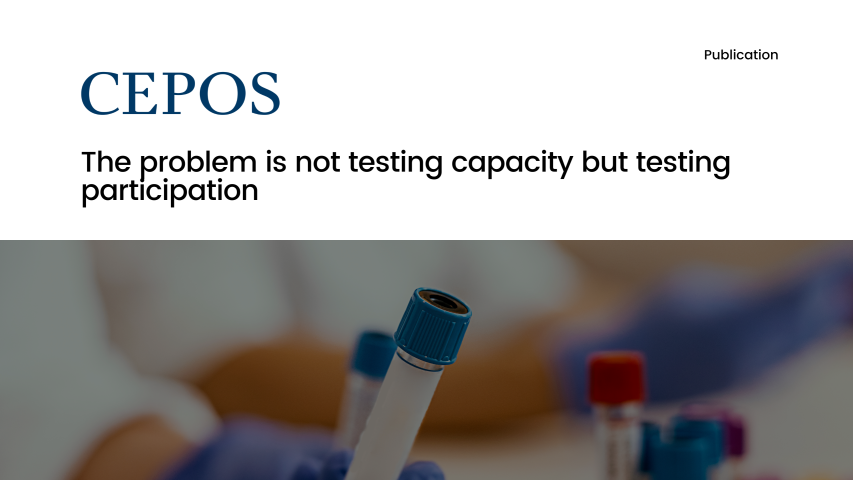The Problem is Not Testing Capacity but Testing Participation

The Problem is Not Testing Capacity but Testing Participation
11 May 2020
This paper argues that testing participation – and not testing capacity – is the biggest obstacle to a successful “test and isolate” strategy, as recently proposed by Paul Romer.
If 𝑅0=2.5, at least 60 percent of a population needs to participate in a testing program to make it theoretically possible to achieve an effective reproduction rate for the whole population, 𝑅′′, below 1. I also argue that Paul Romer’s assumption about quarantine length is problematic, because it implicitly assumes that an infected and tested person is quarantined during the entire duration of the illness.
With more realistic assumptions, where the fraction of the illness duration that is spent in quarantine depends on the test frequency, at least 80 percent of the population must participate to keep 𝑅0′′<1, even if participants in the test program are tested every five days.
Comprehensive testing, as proposed by Romer, is probably still a very cost-effective means of reducing the reproduction rate of the infection compared to mandatory lockdown policies, but it seems less promising than he suggests. However, comprehensive testing might also reduce voluntary social distancing in a non-cost-effective way because testing and isolating infected individuals decreases the risk of infection for an individual if social distancing is not practised.
Download or share this publication
View the PDF
EPICENTER publications and contributions from our member think tanks are designed to promote the discussion of economic issues and the role of markets in solving economic and social problems. As with all EPICENTER publications, the views expressed here are those of the author and not EPICENTER or its member think tanks (which have no corporate view).



